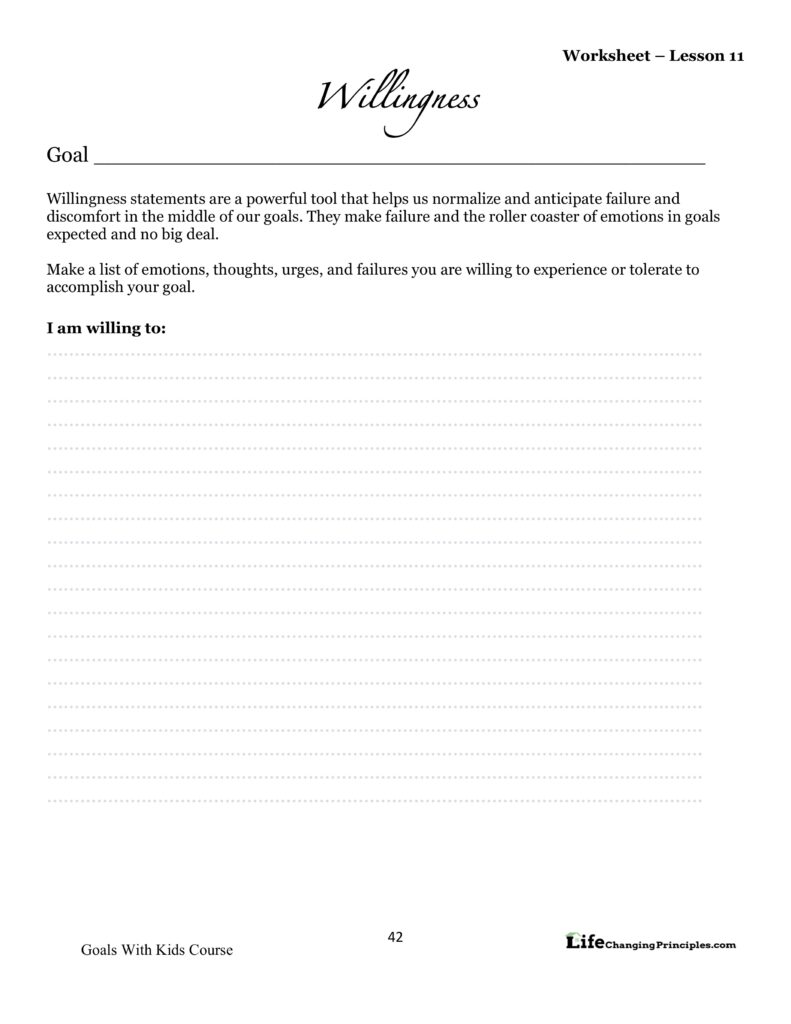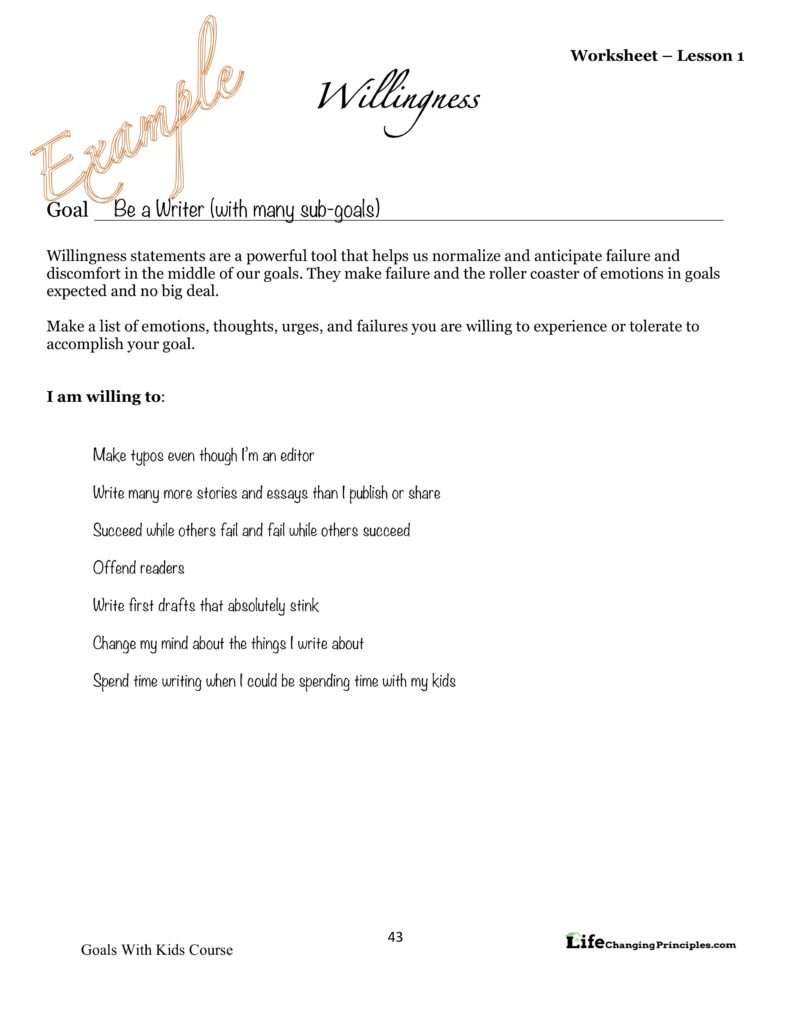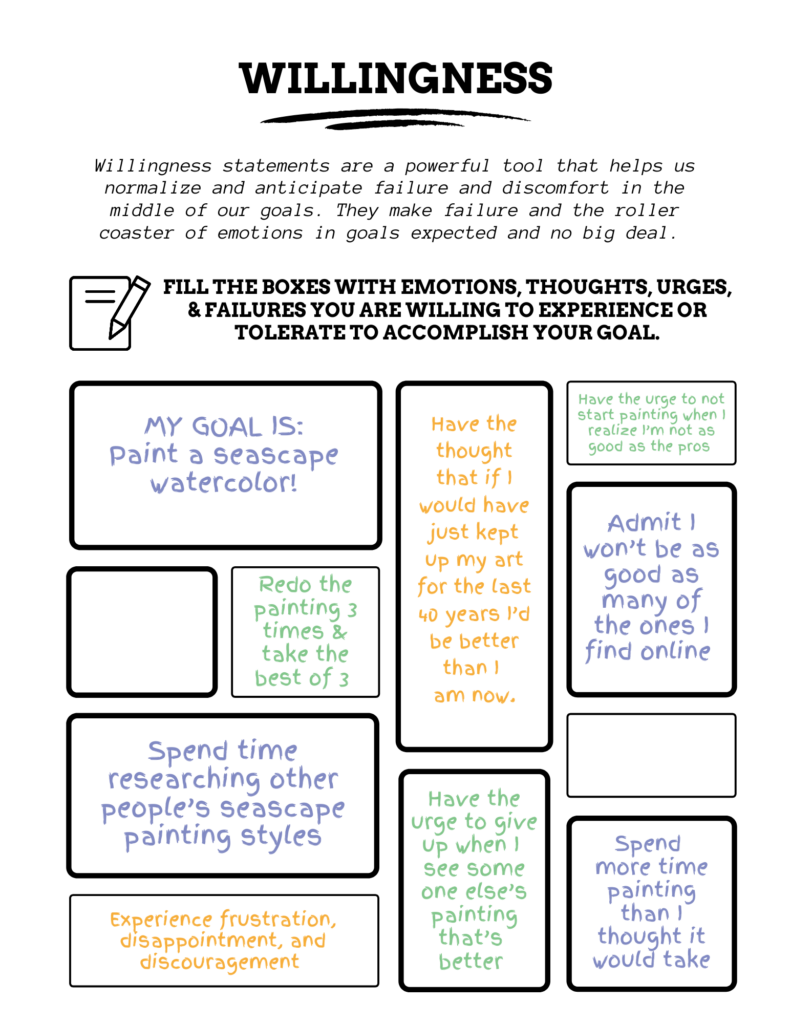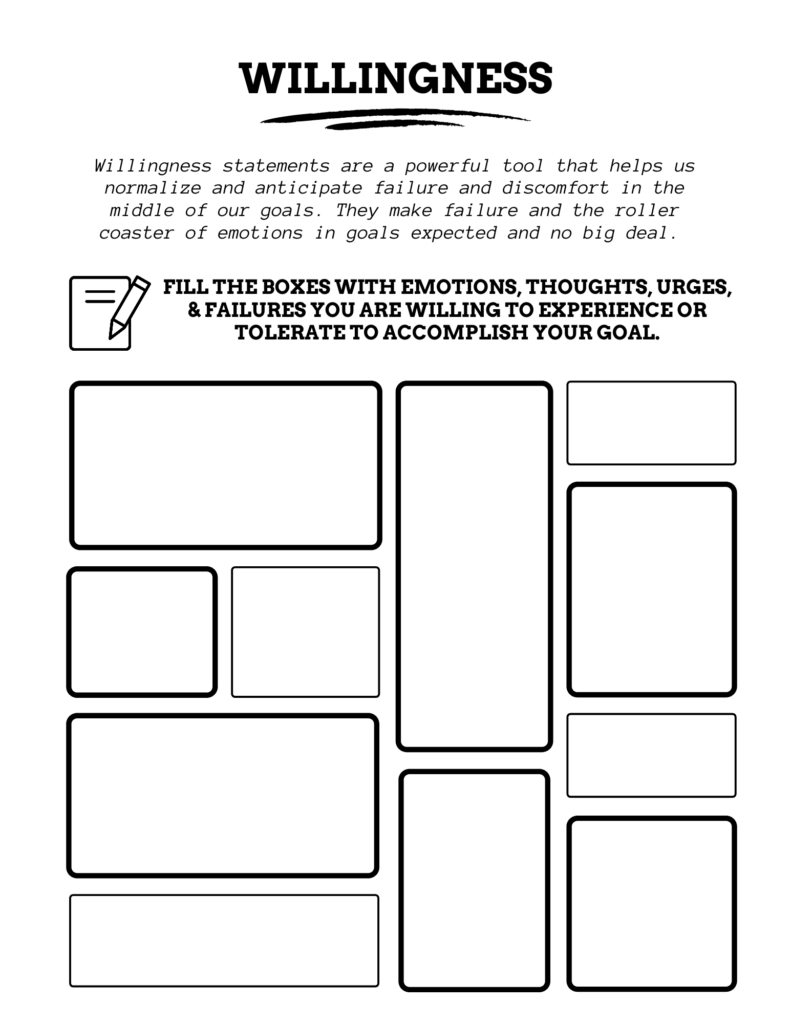Principle:
To pursue a goal we want, we need to be willing to endure unpleasant emotions, experiences, and reactions from others.
LeAnn Hunt Explains the Willingness Principle
In order to reach our goals we will experience discomfort of some kind. You might experience emotions like fear, boredom, disappointment, or anxiety. You might experience fatigue from your efforts. You might experience unexpected reactions from the people around you. As you set out on a goal journey, creating a statement of willingness to experience anticipated forms of unpleasantness can increase motivation when the going gets tough.
Coaching Questions for Willingness
- What are you willing to experience to reach this goal?
- What discomfort might show up if you start this goal? Are you willing to go through that?
- What thoughts and emotions do I need to be willing to tolerate in the service of this goal?
What Does Willingness Look Like in a Goal Journal?
Willingness can be included in a goal journal in a variety of ways:
- It can be a box on your goal declaration page
- It can be a simple statement of willingness
- It can be a whole page of willingness statements for a particular goal
Why bother? If you’ve done the emotional and mental work of anticipating what might get in your way and deciding that you’re willing to tolerate those discomforts in pursuit of your goal, writing it down both honors the decision and reminds you that you knew what you were in for when you started and that you were willing to make the sacrifice to pursue the goal. You may, of course, change your mind in moments of execution and effort, but the willingness statements do tend to help.
Here are some examples of willingness statements and a printable “Willingness” Goal Journal Page





